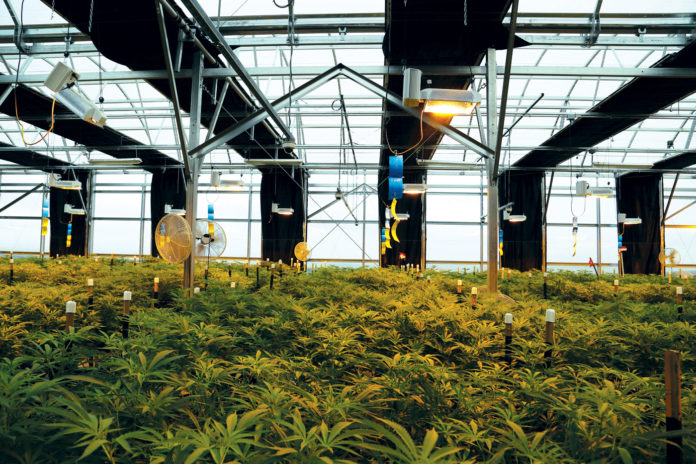Technology is inescapable. That’s not a new or particularly original idea, but for many cannabis growers it’s a surprising one. The new age of growing has arrived, and whether or not they like it, growers are going to have to embrace new technology in order to stay competitive in their markets.
While one grower has multiple laborers pulling blackout tarps, another grower has automated his light-deprivation and eliminated the labor cost. While one grower is frequently administering nutrients and monitoring their delivery, another has a state-of-the-art fertigation system and rarely must consider nutrient delivery. Tools and techniques like these can make the difference between an operation that sets the market standard and one that will be out of business in a year.
The stakes are high, and growers must not only embrace technology they can obtain today, but also continue learning and consider future tech. With this in mind, let’s look at three forms of current tech that too many are overlooking.
Programmable LED fixtures
Light-emitting diodes aren’t especially new, but LED fixtures have continued to evolve. Right now, programmable LED fixtures offer growers more control than any other lighting option. Some of the top growers in the United States are integrating programmable LED fixtures; for an experienced grower, they can increase yield and quality by enabling precise light intensity and spectrum control. Some fixtures even have built-in light-sensing equipment that coordinates output with real-time conditions that maintain exact set points.
With a programmable fixture, growers can create custom light recipes that best compliment the strains they are growing. Cultivators also can easily mimic sunrise, midday lighting, and sunset. With these fixtures, growers have been able to raise terpene levels, and with a programmed far-red push during the final few weeks of growth, they have been able to shorten the flowering period, meaning more harvests each year.
Programmable LED fixtures are designed to interact easily with today’s technology, and many include Wi-Fi capability, microprocessors, and an open API, so they can be integrated into any operation with ease.
Will Kacheris, who designs custom commercial greenhouse systems for GrowSpan Greenhouse Structures, says programmable fixtures “are truly necessary when the grower has an in-depth understanding of how light affects the plant and needs precise results.”
Input-based controls
In a way similar to LED lighting, greenhouse and grow room controls are nothing new, but today more growers are opting for input-based systems that provide control via environmental sensors placed throughout the grow space. Input-based or data-driven systems are taking growers from control setups that run on timers and thermostats to nearly free-thinking control systems that interact with the environment and make necessary changes to equipment on the spot so crops never have to deal with adverse conditions.
When growers integrate input-based controls, they can set up a grow room or greenhouse system that precisely meets their growing requirements. The systems are incredibly versatile and can be matched with just about any grower’s greenhouse or grow room configuration. They also can work with almost any piece of greenhouse equipment or technology and allow the grow space to be broken down into different zones and modules. With this, operations can run different control settings, so crops can be kept in the ideal environment no matter their stage of development.
With the precision and convenience of this technology, why are so many growers overlooking it?
“Price point and complexity to program are the main reasons growers avoid more advanced control systems,” Kacheris said. “However, in terms of the labor cost needed to monitor and maintain old-school controls, both reasons fall flat for a true commercial operation. The labor savings alone mean computer control systems can pay for themselves in a matter of months.”
In addition to other benefits, growers who employ input-based controls are able to step away from their operation without worrying about equipment failure. The data may be viewed remotely via a computer or smart phone, and those looking to almost completely unplug can take advantage of alarms and notification setups that alert the grower of any issues occurring in the greenhouse.
Controls are becoming more advanced all the time, and so is the software used to manage them. Luckily, this leads to superior platforms that provide an easier user experience that can be mastered by anybody. The software accompanying the control systems allows growers to manage controls and view essential data in a number of charts and graphs. Using this data, adjustments can be made to optimize a grow, leading to a more profitable operation.
“There is nothing better than being able to monitor the climate from your smartphone anywhere in the world,” said Kacheris. “And for those nervous about the learning curve, training is available. Most control companies put complete instructions on the web for free, and YouTube is an excellent resource.”
CO2 enrichment
Even though CO2 enrichment can help growers produce bud at a much faster rate and at higher yields, many cultivators don’t integrate the technology. For a lot of growers, this seems to come down to misinformation. Those not looking to supplement usually think they move enough air through their facility, and adding anything would be venting out cash. While these positions are understandable at a superficial level, CO2 systems can be integrated into ventilation controls. This allows growers to supplement CO2 without filtering out all the outdoor atmosphere.
The process can be difficult, but Kacheris offered this piece of advice: “Incorporate a computer control system with a CO2 cycle and read up on how and when plants more efficiently use CO2. Agricultural university websites are an excellent resource for plant science, and growers are already paying for [that resource] in their taxes. They should make use of it. Websites for ag departments—like University of Florida, University of Arizona, and Cornell—are great places to start.”
Since enrichment tools tend to use natural gas, propane, or tanks that contain liquid CO2, they can be a potential safety hazard; therefore, growers should educate themselves as much as possible before installing and operating CO2 equipment. Most growers also should contact their local building department or fire department before installing a CO2 enrichment system.
Growers can integrate modern tech into their operations in many other ways, too, but these are three good places to start. Going forward, growers must stay informed and not let their competition get a technological edge.










